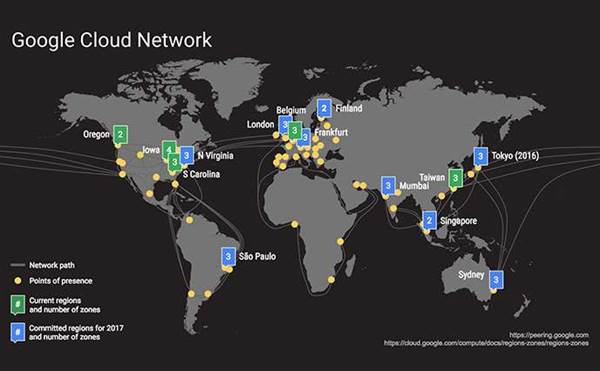Google has opened up to CRN on what it sees as the price and performance benefits it will bring to the Australian cloud marketplace when it launches its first-ever local region in 2017.
The search giant announced in September that it would fire up three availability zones in Sydney for Google Cloud Platform, its infrastructure- and platform-as-a-service offering. The global expansion plan has been driven by Diane Greene, the VMware co-founder who led Google's cloud business since 2015.
Since the announcement, the company has received "an enormous amount of requests and interest from system integrators and managed service providers in Australia", said Rick Harshman, APJ managing director of Google Cloud Platform.
These new partners will join Google's existing community in Australia, with Harshman pointing to the likes of Shine Solutions in Melbourne and Sakura Sky in Sydney as two examples of leading partners, along with "globals like Deloitte and Accenture".
Google enters a market already brimming with rival operators, from hyperscale leaders Amazon Web Services and Microsoft Azure, not to mention IBM Softlayer and a bevy of homegrown IaaS providers. In an interview with CRN, Harshman spruiked what he saw as the company's price benefits over these local and international competitors.
According to a Google blog, the company wants to drive more aggressive cloud price cuts. "Since cloud computing became widely available, public cloud prices have fallen at 6-8 percent annually... we don’t think 6-8 percent comes close to reflecting the true economics of computing. Over the same period of time, the underlying hardware has fallen at 20-30 percent annually – following Moore’s Law."
With sustained-use discounts, Google is "taking the reservation aspect and turning it on its head", said Harshman, who joined the company in April 2016 after six years with Amazon Web Services.
"We fundamentally do not believe in contracts or commitments. Other providers will say the same thing but to get a big discount you will need to sign up for a one- or three-year commitment – a reservation."
With Google, customers who utilise capacity for a sustained period automatically qualify for a discount each month – unlike reserved instances, where a customer must commit to a set volume to get the lower price. Sustained-use discounts begin with VMs that are in use more than 25 percent in a given month.
Harshman pointed to minute-by-minute billing as another potential cost saver. Google's Compute Engine instances are charged in one-minute increments with a 10-minute minimum.
"We have heard from our customers that while they appreciate the pay-as-you-go model that cloud enables, they have seen that it is not as optimised as they would like on different workloads. The lowest price that their cloud provider can offer is on an hourly basis, but Google launched per-minute billing," said Harshman.
"There are a number of workloads that when you automate them and optimise them, you can run them for 25 minutes of the hour and we will only bill for 25 minutes, whereas others will bill for an hour," he said. "When you are running hundreds of applications and hundreds of VMs, that adds up."
The third string in its pricing bow is customisable VMs, which Harshman said could save customers up to 19 percent "on top of the other savings".
Google will need all the differentiators it can find to carve out a greater share of the public cloud market. Synergy Research Group gave Google fourth spot in worldwide market share for the second quarter of 2016, well behind leader AWS, which has more than 30 percent of the market, Microsoft Azure and IBM Softlayer.
Of the big four, Google's 162 percent growth rate is the fastest, according to Synergy, though "remains only a sixth the size of Amazon".
A local Australian footprint has been important for public cloud providers to overcome challenges of data sovereignty as well as latency and performance. This was central to AWS gaining first-mover advantage in Australia when it went live in November 2012.
Microsoft took another two years to launch a local footprint for its Azure public cloud, which it did in 2014 with Sydney and Melbourne availability zones. Later that year, the company also announced Australian hosting for Office 365.
Next: Beyond compute and storage





_(11).jpg&h=142&w=230&c=1&s=1)




.jpg&w=100&c=1&s=0)
_(8).jpg&w=100&c=1&s=0)







.jpg&q=95&h=298&w=480&c=1&s=1)


.jpg&q=95&h=298&w=480&c=1&s=1)


